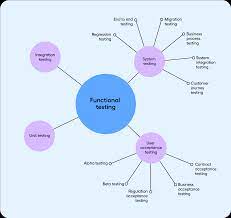The Importance of Quality Assurance in Software Testing
Quality assurance (QA) plays a crucial role in the software development process, particularly in software testing. QA is a systematic approach to ensuring that the software being developed meets specified requirements and standards before it is released to the end-users. In the context of software testing, QA focuses on identifying defects and issues early in the development cycle to prevent costly errors later on.
Key Aspects of Quality Assurance in Software Testing
Preventing Defects: QA aims to prevent defects rather than simply identifying and fixing them after they occur. By implementing quality assurance practices throughout the development process, teams can catch issues early and address them promptly.
Ensuring Compliance: QA helps ensure that the software complies with industry standards, regulations, and best practices. This is particularly important for industries with strict regulatory requirements, such as healthcare or finance.
Enhancing User Experience: Quality assurance contributes to delivering a high-quality product that meets user expectations and provides a seamless experience. By testing for usability, performance, and security, QA helps create software that users can trust and rely on.
The Role of Quality Assurance Professionals
Quality assurance professionals are responsible for designing test plans, executing test cases, analyzing results, and providing feedback to developers. They work closely with developers to ensure that any issues identified are resolved efficiently and effectively.
The Benefits of Quality Assurance in Software Testing
– Improved product quality
– Reduced risk of defects
– Enhanced customer satisfaction
– Cost savings from early defect detection
– Increased efficiency in development processes
In Conclusion
Quality assurance is an essential component of software testing that ensures the delivery of reliable, high-quality products to end-users. By incorporating quality assurance practices into the development process, organizations can mitigate risks, improve efficiency, and ultimately deliver better software products.
7 Key FAQs About Quality Assurance in Software Testing
- What is quality assurance in software testing?
- Why is quality assurance important in software testing?
- How does quality assurance differ from quality control in software testing?
- What are the key principles of quality assurance in software testing?
- What are the common challenges faced in implementing quality assurance practices in software testing?
- How can automation tools help improve quality assurance in software testing?
- What role does documentation play in quality assurance for software testing?
What is quality assurance in software testing?
Quality assurance in software testing refers to the systematic process of ensuring that software products meet specified quality standards and requirements. It involves the implementation of practices and procedures to prevent defects, verify compliance with industry standards, and enhance the overall user experience. Quality assurance professionals play a crucial role in designing test plans, executing test cases, and collaborating with development teams to identify and address issues early in the software development lifecycle. By focusing on proactive measures to maintain quality throughout the testing process, quality assurance helps deliver reliable and high-quality software products to end-users.
Why is quality assurance important in software testing?
Quality assurance is paramount in software testing for several crucial reasons. Firstly, it helps to identify and rectify defects early in the development process, reducing the likelihood of costly errors in the final product. By implementing quality assurance practices, teams can ensure that the software meets specified requirements and industry standards, enhancing its reliability and functionality. Additionally, quality assurance plays a vital role in improving user experience by testing for usability, performance, and security aspects. Ultimately, quality assurance in software testing is essential for delivering high-quality products that meet customer expectations and stand out in today’s competitive market.
How does quality assurance differ from quality control in software testing?
In the realm of software testing, the distinction between quality assurance and quality control is essential to understand. Quality assurance focuses on preventing defects by establishing processes and standards to ensure that the development process consistently produces high-quality software. On the other hand, quality control involves identifying defects through testing and inspection activities after the software has been developed. While quality assurance is proactive in nature, aiming to improve processes to prevent issues, quality control is reactive, focusing on detecting and fixing defects that have already occurred. Both functions are crucial in ensuring the overall quality of software products, with quality assurance laying the foundation for quality control activities to be more effective.
What are the key principles of quality assurance in software testing?
When addressing the frequently asked question, “What are the key principles of quality assurance in software testing?” it is essential to highlight several fundamental principles that guide quality assurance practices. These principles include proactive defect prevention through thorough planning and early detection, adherence to industry standards and best practices to ensure compliance and consistency, continuous improvement through feedback analysis and process refinement, and a focus on delivering a reliable, user-centric product that meets or exceeds customer expectations. By upholding these key principles, quality assurance in software testing plays a critical role in enhancing product quality, mitigating risks, and fostering customer satisfaction.
What are the common challenges faced in implementing quality assurance practices in software testing?
Implementing quality assurance practices in software testing can be challenging due to various factors. One common challenge is the lack of clear communication and collaboration between different teams involved in the development process, leading to misunderstandings and inefficiencies. Additionally, ensuring adequate test coverage across all functionalities of the software and managing resources effectively can pose challenges. Another common issue is adapting to constantly evolving technologies and methodologies, which requires continuous learning and upskilling. Overcoming these challenges requires a proactive approach, strong leadership, effective coordination among team members, and a commitment to quality throughout the software development lifecycle.
How can automation tools help improve quality assurance in software testing?
Automation tools play a crucial role in improving quality assurance in software testing by streamlining repetitive testing tasks, increasing test coverage, and enhancing the accuracy and reliability of test results. These tools enable QA teams to execute tests more efficiently, identify defects early in the development cycle, and reduce the likelihood of human error. By automating regression tests, load testing, and performance testing, QA professionals can focus on more complex scenarios and exploratory testing, ultimately leading to higher-quality software products delivered to end-users.
What role does documentation play in quality assurance for software testing?
Documentation plays a critical role in quality assurance for software testing by providing a comprehensive record of test plans, test cases, test results, and any issues encountered during the testing process. Clear and detailed documentation helps ensure that testing activities are well-organized, repeatable, and traceable. It serves as a reference for quality assurance professionals to track the progress of testing, communicate findings effectively with stakeholders, and facilitate collaboration between team members. Additionally, thorough documentation enhances transparency and accountability in the software testing process, ultimately contributing to the overall quality of the software being developed.




